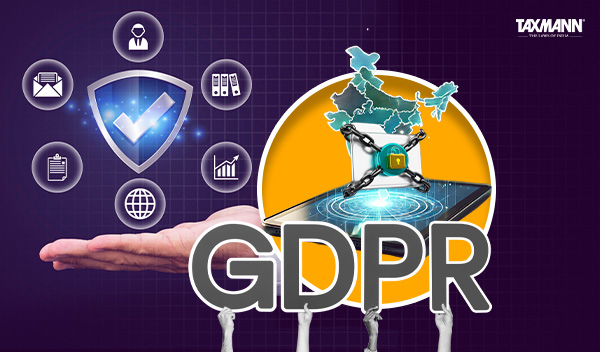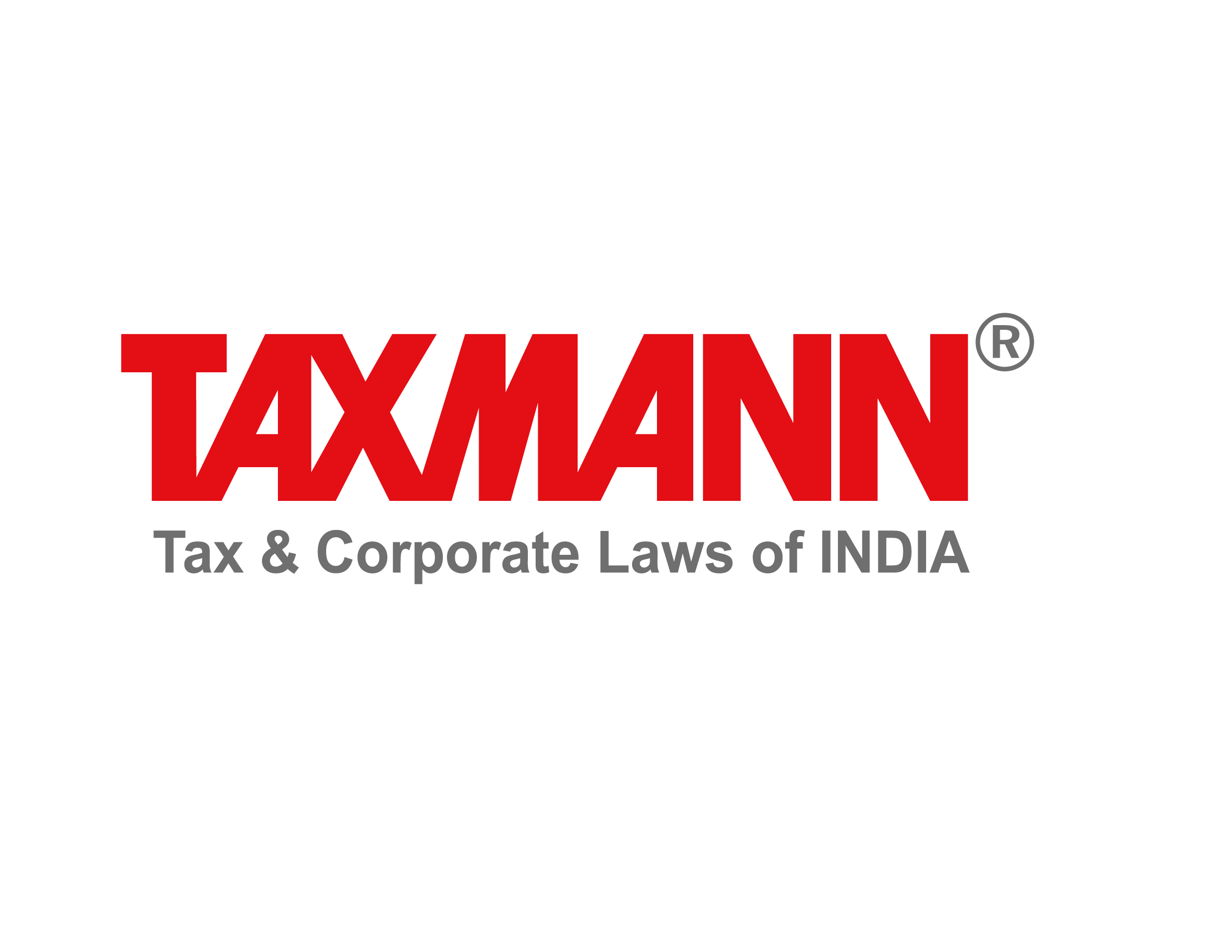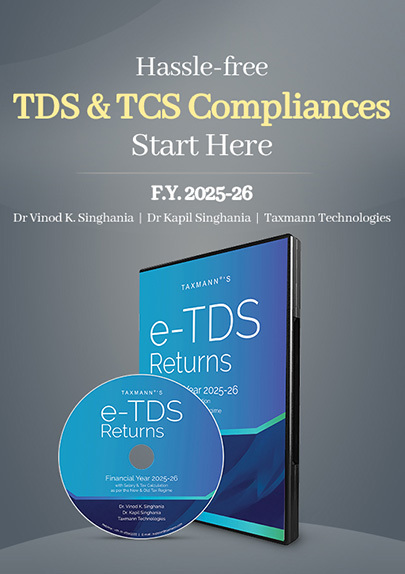DPDP Act vs EU GDPR Compliance – A Comparative Analysis
- Blog|Company Law|
- 3 Min Read
- By Taxmann
- |
- Last Updated on 4 May, 2025

GDPR Compliance refers to the adherence to the rules and principles outlined in the General Data Protection Regulation (GDPR)—a comprehensive data protection law enacted by the European Union (EU) that came into effect on May 25, 2018. It governs how organisations collect, process, store, and transfer personal data of individuals within the EU and European Economic Area (EEA), regardless of where the organisation is located.
Table of Contents
- Rationale for Comparison
- Side‑by‑Side Snapshot
- Key Convergences
- Significant Divergences
- Data‑Transfer Approaches
- Interoperability Roadmap
- Regulatory Cooperation & Adequacy Prospects
- Conclusion
Check out Taxmann's Digital Personal Data Protection Act 2023 with Draft Rules – Bare Act with Section Notes which offers a robust framework for India's data privacy landscape. It clarifies rights and safeguards for Data Principals, details obligations for Data Fiduciaries, and highlights recent legislative updates from statutes like the IT Act and RTI Act. Comprehensive Section Notes and FAQs delve into key principles such as consent and cross-border transfers, simplifying complex provisions for easy reference. The book's structured approach, with illustrations, indexes, and a clear layout, caters to legal practitioners, corporate counsels, regulators, students, and IT professionals.
1. Rationale for Comparison
Many Indian MNCs already comply with the EU General Data Protection Regulation (GDPR). Leveraging overlap speeds DPDP adoption and highlights delta areas needing fresh investment.
2. Side‑by‑Side Snapshot
| Parameter | DPDP Act (India) | GDPR (EU) |
| Enacted | 11 Aug 2023 | 25 May 2018 |
| Regulator | Data Protection Board (adjudicatory) | Independent DPAs per Member State + EDPB |
| Legal Bases | Consent + 7 specific “legitimate uses” | Six bases incl. legitimate interest, contract, vital interest |
| Children’s Age | < 18 yrs (parental consent) | < 16 yrs (may lower to 13) |
| Data Categories | No distinction; uniform PD | Special category & criminal convictions data |
| Cross‑Border | Allowed unless black‑listed | Allowed to countries with adequacy or SCCs |
| Fines | Up to ₹250 cr (~€28 m) per violation | Up to €20 m or 4% global turnover |
| Right to Portability | Not explicitly provided | Article 20 right |
| Automated Decision‑Making | No express right to human review | Art 22 safeguards |
| Data Principal Duties | Yes – penalties for frivolous complaints | None |
3. Key Convergences
- Consent Standards – Free, specific, informed, unambiguous, affirmative.
- Privacy‑by‑Design & DPIA – Mandated for high‑risk processing.
- Breach Notification – Authority + data subjects without undue delay (GDPR 72 hrs; DPDP likely similar).
- DPO – Compulsory for large‑scale/high‑risk entities (SDF vs GDPR Art 37).
4. Significant Divergences
| Divergence | Compliance Impact for GDPR‑ready Entities |
| Age threshold (18) | Re‑engineer gating & parental‑consent flows. |
| No “legitimate interest” basis | Indian ops that relied on LI (e.g., analytics, direct marketing) must obtain consent or map to Sec 7 clauses. |
| Uniform penalty ceiling | Global entities may face lower absolute fines in India but reputational risk still high. |
| Data Principal duties | Need to embed mechanism to reject frivolous requests; maintain evidence. |
5. Data‑Transfer Approaches
- GDPR – Adequacy decisions, SCCs, BCRs, Art 49 derogations.
- DPDP – No adequacy concept; only negative list ⇒ SCCs still prudent to satisfy “reasonable safeguards” & contractual risk‑allocation.
6. Interoperability Roadmap
| DPDP Gap | Existing GDPR Artefact to Re‑use | Required Delta |
| Notice & consent language | GDPR privacy notice | Translate into Indian languages; add DPB grievance route. |
| Security measures | ISO 27001/ NIST already in place | Extend to India‑specific cloud zones and log retention periods. |
| DPO | EU DPO present | Appoint an India‑based DPO or deputy; update contact info. |
| Rights portal | GDPR SAR portal | Add “nominee” feature; update SLA to DPB rules. |
7. Regulatory Cooperation & Adequacy Prospects
The EU‑India Trade & Technology Council (TTC) has set up a data‑governance subgroup. While DPDP does not copy GDPR verbatim, convergence on principles may pave way for partial adequacy (easing EU‑to‑India transfers) by 2027.
8. Conclusion
GDPR‑mature organisations possess a solid baseline, but three major gaps—children’s age, legal‑basis mapping and language localisation—must be addressed for DPDP compliance.
Dive Deeper:
Overview of Digital Personal Data Protection Act (DPDP Act) 2023
Scope and Key Definitions Under DPDP Act
Rights of Data Principals under the DPDP Act 2023
Lawful Processing and Consent under DPDP Act 2023
Cross‑Border Data Transfers under the DPDP Act 2023
Obligations of Data Fiduciaries under DPDP Act 2023
Data Privacy Breach | Enforcement | Penalties under the DPDP Act
DPDP Act Compliance Checklist for Businesses
DPDP Act vs IT Act – Shifting India’s Data‑protection Paradigm
DPDP Act Impact on Startups and SMEs in India
FinTech and BFSI – Sector-specific Guidance for DPDP Compliance
DPDP in Healthcare Ecosystem – HealthTech and Hospitals
Disclaimer: The content/information published on the website is only for general information of the user and shall not be construed as legal advice. While the Taxmann has exercised reasonable efforts to ensure the veracity of information/content published, Taxmann shall be under no liability in any manner whatsoever for incorrect information, if any.

Taxmann Publications has a dedicated in-house Research & Editorial Team. This team consists of a team of Chartered Accountants, Company Secretaries, and Lawyers. This team works under the guidance and supervision of editor-in-chief Mr Rakesh Bhargava.
The Research and Editorial Team is responsible for developing reliable and accurate content for the readers. The team follows the six-sigma approach to achieve the benchmark of zero error in its publications and research platforms. The team ensures that the following publication guidelines are thoroughly followed while developing the content:
- The statutory material is obtained only from the authorized and reliable sources
- All the latest developments in the judicial and legislative fields are covered
- Prepare the analytical write-ups on current, controversial, and important issues to help the readers to understand the concept and its implications
- Every content published by Taxmann is complete, accurate and lucid
- All evidence-based statements are supported with proper reference to Section, Circular No., Notification No. or citations
- The golden rules of grammar, style and consistency are thoroughly followed
- Font and size that’s easy to read and remain consistent across all imprint and digital publications are applied





 CA | CS | CMA
CA | CS | CMA
